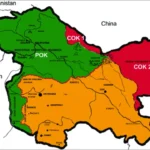Elon Musk’s satellite internet project is set to revolutionize India’s broadband landscape with affordable, high-speed access for remote and underserved regions.
In a significant development for India’s digital future, Starlink — the satellite-based internet service operated by Elon Musk’s SpaceX — is on the verge of launching its operations in the country. The impending entry of Starlink into India’s broadband market could dramatically reshape connectivity in rural and underserved areas, bringing affordable, high-speed internet access to millions of users who remain disconnected from traditional infrastructure.
Regulatory Green Light Expected Soon
Starlink’s launch in India has been under regulatory scrutiny for some time, but recent reports indicate that the final approval from the Indian government is imminent. The company is working closely with the Indian National Space Promotion and Authorization Center (IN-SPACe) and the Department of Telecommunications (DoT) to ensure compliance with local licensing norms.
This development aligns with India’s growing emphasis on digital infrastructure and Prime Minister Narendra Modi’s “Digital India” mission, which aims to ensure last-mile connectivity across the country.
Affordable Pricing Tailored for Indian Consumers
A key highlight of Starlink’s upcoming launch is its attractive and cost-effective pricing model. According to industry insiders, the monthly subscription plan for Indian users is expected to start at under ₹840 — a move that positions the service as a cost-effective alternative for rural households, small businesses, and educational institutions in regions with limited broadband access.
This pricing, while appealing, is supported by the promise of fast and consistent internet speeds, which range between 50 Mbps to 250 Mbps in global markets. The speeds are more than adequate for video streaming, online education, telehealth, and remote work.
High-Speed Internet for Rural India
India has made rapid progress in internet penetration over the past decade, but stark gaps persist between urban and rural areas. A 2023 TRAI (Telecom Regulatory Authority of India) report revealed that while urban internet penetration stands at over 80%, rural areas still struggle with spotty or non-existent connectivity.
Starlink aims to bridge this divide using its constellation of over 5,000 low-earth orbit (LEO) satellites. These satellites enable consistent internet coverage without the need for fiber-optic cables or mobile towers, making them ideal for geographically challenging terrains such as hilly regions, islands, deserts, and dense forests.
Hardware Costs: A Potential Challenge
Despite the affordable monthly subscription, the hardware required to access Starlink’s service — which includes a satellite dish, Wi-Fi router, and cables — may cost between ₹30,000 and ₹40,000. While this one-time investment might be a hurdle for some low-income households, analysts believe the long-term benefits in terms of reliability and performance will outweigh the upfront cost.
There are also expectations that Starlink could introduce EMI options or subsidies for rural users, possibly in collaboration with government schemes aimed at digital inclusion.
Strategic Partnerships on the Horizon
To strengthen its presence in India, Starlink is reportedly in talks with major Indian telecom operators like Reliance Jio and Bharti Airtel. These partnerships could facilitate smoother distribution, local logistics, after-sales service, and customer support, enhancing the user experience and accelerating adoption.
Furthermore, collaboration with state governments could see Starlink being deployed in schools, health centers, and public service offices located in remote regions.
Impact on Education, Healthcare, and Economy
The implications of Starlink’s arrival go far beyond faster browsing. In rural India, where online classes are often disrupted by poor connectivity, reliable satellite internet can be a catalyst for improving education outcomes. Similarly, telemedicine services can reach patients in villages without the need for long commutes to urban hospitals.
For small businesses and entrepreneurs, access to reliable internet means reaching larger markets, using digital payment systems, and accessing e-commerce platforms. It also opens up opportunities for remote work in areas previously considered digitally isolated.
Looking Ahead: Timeline and Rollout Strategy
While an official launch date has not been announced, experts predict Starlink services could go live in India by late 2025 or early 2026. The rollout is expected to start with pilot projects in select rural districts, gradually expanding to nationwide availability based on feedback and infrastructure readiness.
Starlink has already begun accepting preorders from Indian users in some states, indicating a strong demand for its services even before official launch.
Conclusion: A Digital Revolution in the Making
Starlink’s expected debut in India represents more than just market growth — it signals a transformative leap toward digital inclusion. With its advanced satellite technology and commitment to bridging connectivity gaps, Starlink is positioned to redefine how millions in India access and experience the internet.
As regulatory approvals near completion and operational logistics fall into place, millions of Indians stand on the threshold of a new era of digital access, empowerment, and opportunity. The sky is no longer the boundary — it’s merely the starting point of a new digital era.





